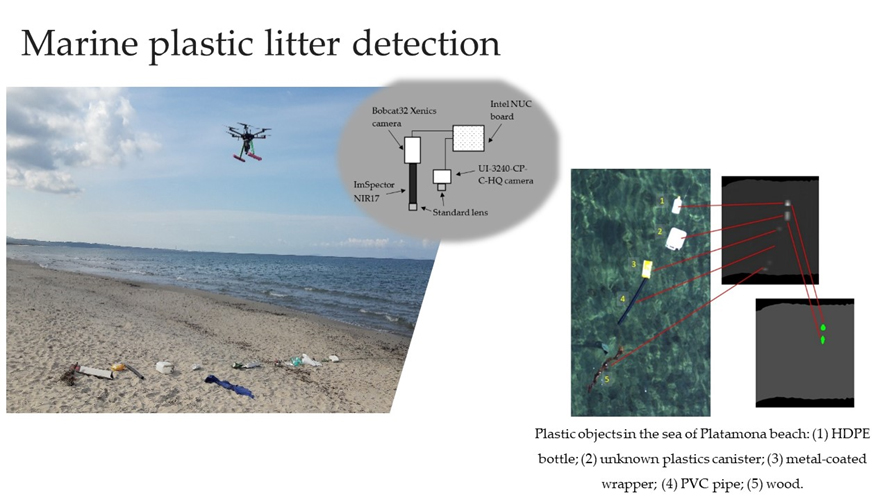ICI Research of the Week: Marine plastic litter detection

The hyperspectral sensors allow an extremely detailed analysis of the absorption properties of different materials to light radiation (visible or not) to be carried out. This permits the identification of the material nature and/or of the surface properties. The visible and near infrared bands (VIS/NIR, wavelength range 400-1000nm) are used to detect properties of vegetation such as the photosynthetic activity and water stress situations. This information can be used for monitoring the plant physiology, growth and health, as well as (together with other ancillary data) to identify their species and phenotype, for both agricultural and forestry applications. The short wave infrared bands (NIR/SWIR, wavelength range 900-2000nm) reveal important material properties that make it possible the identification of complex molecules, including plastic polymers, but the applications extend to many other fields, including for example, among large-scale investigations, the recognition of asbestos or the identification of rocks in geology.
Monica Moroni of ICI DICEA, together with her colleague Marco Balsi of DIET-Sapienza University of Rome, have developed a device suitable for the acquisition of hyperspectral images in the visible and near infrared wavelengths range (400 - 1700 nm). The device may be carried onboard of a drone. The instrument also includes a camera with a standard lens for georeferencing the acquired images and an inertial unit equipped with GPS for measuring the position and spatial orientation of the aircraft the device is mounted onboard.
Several remote-sensing field campaigns were carried out, aimed at identifying macroplastic debris loads in the sea and on the coast, through an automatic custom-made procedure. The developed plastics detection algorithm is obtained by supervised learning of a linear classifier. Thanks to the very low computation load of the detection algorithm, real-time detection can be performed and the full geographical positioning of the litter identified and transmitted to the ground via the inertial unit.
https://www.mdpi.com/2072-4292/13/8/1557




